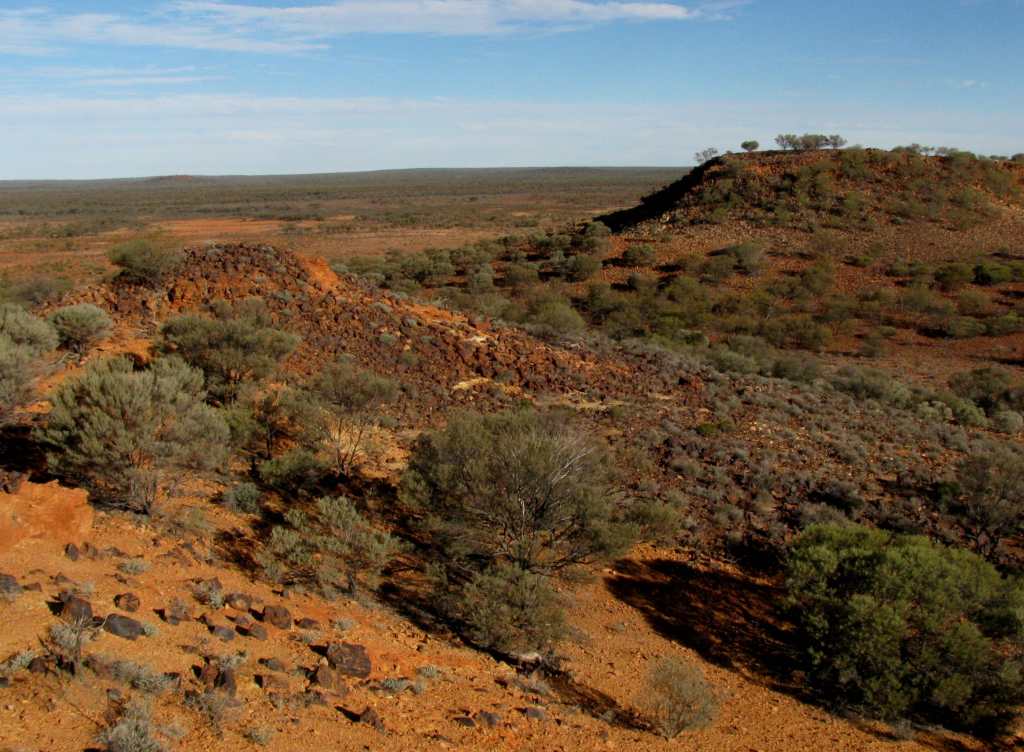In early February, I listened to an ABC radio documentary about the Simpson Desert that made me yearn to explore those red sand dunes with their gidgee trees, clumps of spinifex grasses, and diverse arid-country reptiles and mammals.1 I thought that perhaps Vilis and I would one day load the Kia with camping gear and extra water and gasoline and head for the corner of the Simpson Desert that occupies the southwest corner of Queensland.
As it turns out, we will be heading to the desert, but not the Simpson Desert. Instead, we’ll spend three weeks near Wiluna in Western Australia, on the edge of the Gibson Desert. There we’ll work as volunteers for Dr. Euan Ritchie, who is comparing the biodiversity on farms where graziers trap dingoes with the biodiversity on farms where graziers don’t kill dingoes. This means that Vilis and I will spend our days sampling mammals, birds, and vegetation on one station of each kind. We’ll leave Townsville in late May and return in mid-June.
Before responding to Euan’s invitation, I went online and checked out the Wiluna climate and landscape via the Shire of Wiluna website,2 from which all the information in the next two paragrapshs is taken. Not surprisingly, I discovered that the area is desert dry, receiving about 25 centimetres of rainfall each year. Also in character with its designation as desert, Wiluna experiences temperature extremes ranging from summer highs in excess of 40°C and winter lows dropping to below freezing. However, the temperatures for May and June looked reasonable, with highs of 20-24°C and lows of 7-10°C. The landscape, I learned, falls into 3 types. The first is sand plains vegetated by spinifex grasses and scatterings of trees. The second is mulga country that supports a variety of slow-growing acacia trees, one being the mulga. The third is rocky country with only sparse plant cover, most of which is acacias, largely mulgas.
The website2 also informed me that, although the town of Wiluna has a population of only 300, the Shire of Wiluna is vast, encompassing 184,000 square kilometres. Most of that area is grazing land or controlled by mining companies that operate fly-in, fly-out villages. The total shire population is just over 1600, of which more than three-quarters are men. (Presumably that ratio is related to the mining industry’s strong presence.) Many of the permanent residents are Aboriginals that live in small villages, as well as in Wiluna.
From The Rough Guide to Australia,3 I learned that Western Australia is, like the Shire of Wiluna, vast in its proportions, occupying a third of the landmass of this continent. Much of it is desert – Great Sandy Desert, Gibson Desert, Great Victoria Desert – and most of its population of 1.7 million reside in the state capital of Perth or in other coastal centres. Despite its small population, Western Australia (or WA as it’s commonly called) is the richest state in the country (all those mines) and is responsible for a quarter of the national economy.3 So, we’ll jump from life in a tropical city and explorations of the wet tropics to life in a research field camp and explorations of a western desert. Should be fun.

Western Australia Desert (© Vilis Nams)
References:
1. ABC Radio National, The Science Show. Ecology of the Simpson Desert. February 20, 2010.
2. Shire of Wiluna, Edge of the Desert. Updated 13-Apr-2010. Accessed 8-May-2010. http://www.wiluna.wa.gov.au/
3. Margo Daly, Anne Dehne, David Leffman and Chris Scott. The Rough Guide to Australia. 2001. Rough Guides, New York. pp. 687-690.


